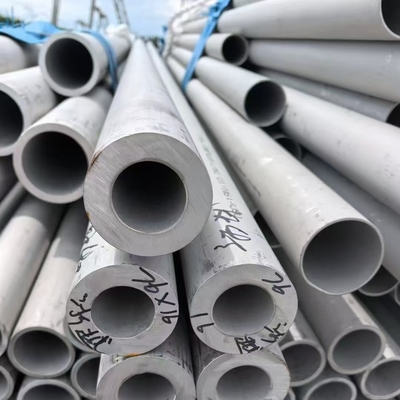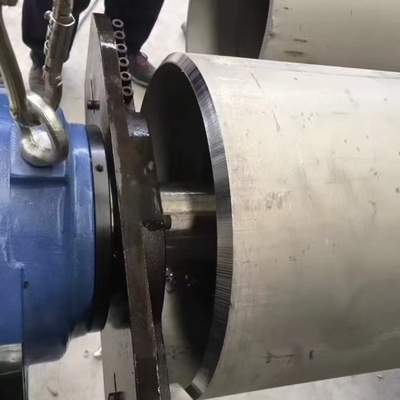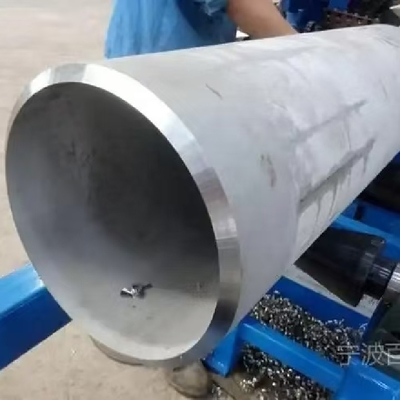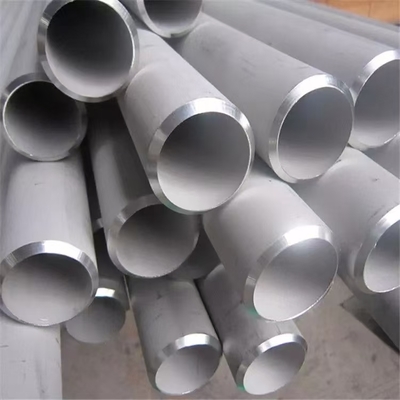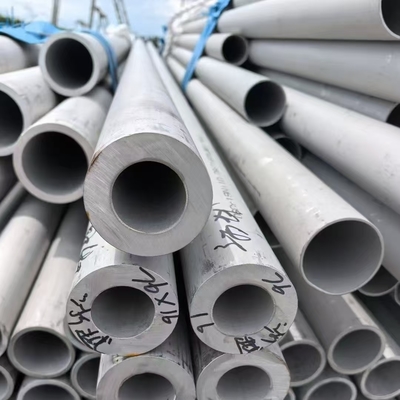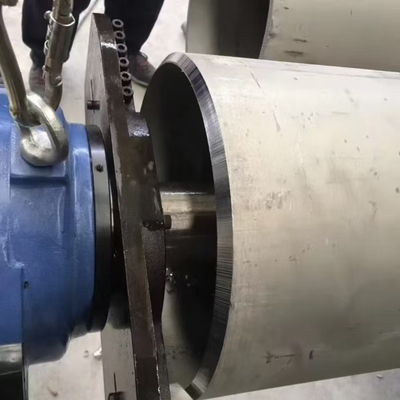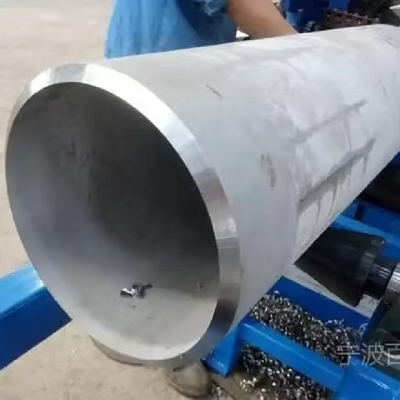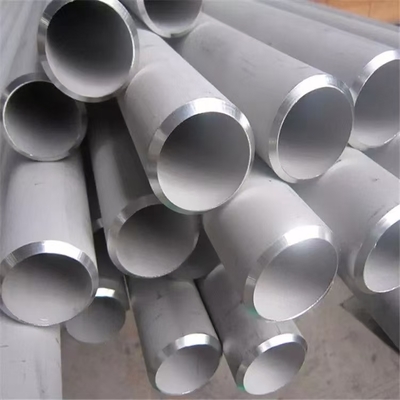Все продукты
-
Прокладка нержавеющей стали
-
Лист нержавеющей стали
-
Плита нержавеющей стали
-
труба нержавеющей стали
-
Адвокатура нержавеющей стали
-
Гальванизированная стальная катушка
-
Стальная пластина
-
стальной круглый бар
-
сплав никеля
-
Безшовная стальная труба
-
Луч нержавеющей стали
-
Лист медной плиты
-
Медная круглая Адвокатура
-
 Raian IonescuМатериальное качество очень хорошее. мы имеем объединить больше чем 10 лет. Они торгуют видами серий стального материала. Полностью материальное качество хорошее. Они обязанность для полностью материального качества. Мы строгаем для того чтобы продолжать объединить с ними в будущем
Raian IonescuМатериальное качество очень хорошее. мы имеем объединить больше чем 10 лет. Они торгуют видами серий стального материала. Полностью материальное качество хорошее. Они обязанность для полностью материального качества. Мы строгаем для того чтобы продолжать объединить с ними в будущем
316Ti Stainless Steel Seamless Pipe ASTM EN DN10-DN400
| Место происхождения | Китай |
|---|---|
| Фирменное наименование | DELTA |
| Сертификация | ISO |
| Номер модели | 316TI / S31635 |
| Количество мин заказа | 1000 кг |
| Цена | 3.5 - 4.1 USD/Kg |
| Упаковывая детали | стандартная упаковка для экспорта |
| Время доставки | 5 - 12 дней на основе количества |
| Условия оплаты | L/C, T/T, Western Union |
| Поставка способности | 4 тонны в неделю |

Свяжитесь я бесплатно образцы и талоны.
Whatsapp:0086 18588475571
Wechat: 0086 18588475571
Skype: sales10@aixton.com
Если вы имеете любую заботу, то мы предусматриваем 24-часовую интерактивную справку.
xПодробная информация о продукте
| Продукция | Бесшовная труба из нержавеющей стали | Оценка | 316ti |
|---|---|---|---|
| Диаметр | DN10 - DN400 | Длина | 6м или пользовательская резак по любой длине в качестве запроса |
| Стандартный | Astm en | Услуга | Резка |
| Загрузочный порт | Шанхайский порт | Толщина | 4.0 - 50,0 мм |
| Выделить | 316Ti stainless steel pipe,heat resistant stainless steel pipe,seamless welded SS pipe |
||
Характер продукции
Alloy 316Ti Stainless Steel Pipe Seamless & Welded SS Pipe UNS S31635 Heat Resistant Stainless Steel
Products Specification
| Products Name | 316Ti Stainless Steel Seamless Pipe |
Grade: |
304 304L 304LN 304H 309S 310S 314 315 316L 316Ti 317L 321 329 347H 410 2205 2507 2550 S32760 904L 254SMO and equal grade in GB JIS EN DIN Standard |
| Standards: | ASTM A213M-94b ASTM A249M-94a ASTM A269-94a ASTM A312M-94b,ect. ASTM A790 |
| DIN 17456-85 DIN 17458-85 DIN 17459-92.ect | |
| JIS G3446-1994 JIS G3448-1997 JIS G3459-1997 JIS G3463-1994,ect. | |
| GB13296-1991 GB14975-2002 GB14976-2002,ect. | |
| Size: | ND5 - DN400 |
| Length: | 6m length or cutting any length as request |
| Applications: | fluid and gas transport, structure , boiler, heat exchanger, super heater |
Alloy 316Ti stainless steel pipe, designated by the Unified Numbering System (UNS) S31635, is a premium austenitic stainless steel variant engineered to enhance the performance of standard 316 stainless steel. Its core advantage lies in the addition of titanium (Ti), which stabilizes the material against intergranular corrosion—especially critical during high-temperature welding or long-term exposure to elevated heat. This heat-resistant, corrosion-resistant pipe is widely used in demanding industrial environments, available in two primary configurations: seamless (for high-pressure applications) and welded (for cost-effective, large-diameter needs).
1. Material Composition & Key Properties
The titanium addition in UNS S31635 modifies its microstructure, delivering superior durability compared to 316 or 316L. Below is its typical chemical composition and critical mechanical/thermal properties.
1.1 Chemical Composition (per ASTM/ASME Standards)
| Element | Content Range (%) | Function |
|---|---|---|
| Chromium (Cr) | 16.0 – 18.0 | Enhances oxidation resistance and general corrosion resistance. |
| Nickel (Ni) | 10.0 – 14.0 | Stabilizes the austenitic structure, improving ductility and toughness. |
| Molybdenum (Mo) | 2.0 – 3.0 | Boosts resistance to pitting and crevice corrosion (e.g., in saltwater). |
| Titanium (Ti) | 5×C – 0.70 | Prevents carbide precipitation (intergranular corrosion) at high temps. |
| Carbon (C) | ≤ 0.08 | Controls strength; kept low to avoid carbide formation (stabilized by Ti). |
| Iron (Fe) | Balance | Base metal providing structural integrity. |
| Manganese (Mn) | ≤ 2.0 | Aids in melting and forming; limits brittleness. |
| Silicon (Si) | ≤ 1.0 | Improves oxidation resistance during high-temperature service. |
| Phosphorus (P) | ≤ 0.045 | Minimized to reduce brittleness and corrosion risk. |
| Sulfur (S) | ≤ 0.030 | Controlled to maintain weldability and toughness. |
1.2 Mechanical & Thermal Properties
| Property | Value (Typical) | Test Condition |
|---|---|---|
| Tensile Strength | ≥ 515 MPa (75,000 psi) | Room temperature |
| Yield Strength (0.2% offset) | ≥ 205 MPa (30,000 psi) | Room temperature |
| Elongation (in 50 mm) | ≥ 40% | Room temperature |
| Hardness (Brinell) | ≤ 217 HB | Annealed condition |
| Maximum Service Temperature | 800°C (1,472°F) | Continuous exposure |
| Corrosion Resistance | Excellent against pitting, crevice, and general corrosion; resistant to seawater, acidic solutions, and industrial chemicals. | - |
2. Seamless vs. Welded 316Ti Stainless Steel Pipes
316Ti pipes are manufactured in two styles to suit different pressure, diameter, and cost requirements. The table below compares their key features:
| Feature | Seamless 316Ti Pipe | Welded 316Ti Pipe (ERW/TIG) |
|---|---|---|
| Manufacturing Process | Hot/cold extruded from solid metal billets; no welds. | Formed from flat stainless steel coils, then welded (Electric Resistance Welding/Tungsten Inert Gas welding). |
| Pressure Capacity | Higher (ideal for high-pressure systems: oil/gas, hydraulics). | Lower than seamless; suitable for low-to-medium pressure applications. |
| Diameter Range | Small to medium: 6 mm (0.236”) – 610 mm (24”) OD. | Medium to large: 15 mm (0.59”) – 2,000 mm (78.7”) OD. |
| Wall Thickness | Thicker, uniform walls (SCH 5S – SCH 160, XS, XXS). | Thinner walls (SCH 10S – SCH 80S); precise thickness control. |
| Surface Finish | Smooth internal/external (reduces fluid friction). | May have a slight weld seam (can be polished for hygiene applications). |
| Cost | More expensive (complex manufacturing). | Cost-effective (high production efficiency for large diameters). |
| Key Applications | High-pressure oil/gas pipelines, boiler tubes, chemical reactors. | Water treatment, HVAC, architectural structures, low-pressure industrial piping. |
3. Specifications & Standards
316Ti stainless steel pipes adhere to global industry standards to ensure consistency in quality, dimensions, and performance. Below are the most common standards:
| Standard Organization | Standard Number | Scope |
|---|---|---|
| ASTM International | ASTM A312 | Standard for seamless, welded, and heavily cold-worked austenitic stainless steel pipes for high-temperature and general service. |
| ASTM International | ASTM A790 | Standard for welded austenitic and duplex stainless steel pipes (covers ERW/TIG-welded 316Ti). |
| ASME | ASME B36.19M | Specifies dimensions, wall thicknesses (schedule numbers), and tolerances for stainless steel pipes (applies to both seamless and welded). |
| EN (European Norm) | EN 10216-5 | Technical delivery conditions for seamless steel pipes; part 5 covers austenitic stainless steels (includes 316Ti/UNS S31635). |
| JIS (Japanese Industrial Standard) | JIS G3459 | Stainless steel pipes for pressure service (seamless and welded 316Ti). |
| ISO | ISO 1127 | Stainless steel tubes for general purposes (includes 316Ti seamless/welded tubes). |
3.1 Common Dimensions
- Outer Diameter (OD): 6 mm – 2,000 mm (varies by seamless/welded).
- Wall Thickness (Schedule): SCH 5S, SCH 10S, SCH 20S, SCH 40S, SCH 80S, SCH 160, XS (Extra Strong), XXS (Double Extra Strong).
- Length:
- Seamless: 3 m – 12 m (fixed lengths) or custom cut-to-length.
- Welded: Up to 18 m (continuous lengths) or custom lengths.
4. Applications
UNS S31635/316Ti stainless steel pipes excel in heat-intensive, corrosive, or high-purity environments due to their titanium stabilization and molybdenum-enhanced corrosion resistance. Key application industries include:
4.1 Chemical & Petrochemical Industry
- Piping for transporting acidic/basic chemicals (e.g., sulfuric acid, nitric acid).
- Reactor tubes, heat exchanger tubes, and distillation columns (resistant to high temps and chemical attack).
4.2 Oil & Gas Industry
- Seamless pipes for offshore platforms (resistant to seawater corrosion) and onshore high-pressure gas pipelines.
4.3 Power Generation
- Boiler tubes and steam pipes in thermal power plants (withstands continuous exposure to 600–800°C).
4.4 Food & Pharmaceutical Industry
- Welded pipes for hygienic processing lines (e.g., dairy, beverage, pharmaceutical manufacturing) – polished surfaces prevent bacterial growth.
4.5 Water Treatment & Desalination
- Pipes for reverse osmosis (RO) systems and seawater desalination plants (resists pitting from saltwater).
4.6 Architectural & Construction
- Welded pipes for decorative structures (e.g., handrails, facades) and HVAC systems (corrosion-resistant in urban environments).
5. Other 316Ti Stainless Steel Products
Beyond pipes, UNS S31635 is fabricated into various components to support end-to-end industrial systems:
- 316Ti Stainless Steel Tubes: Smaller-diameter (≤ 15 mm OD) than pipes; used in instrumentation, medical devices, and heat exchangers (per ASTM A213).
- 316Ti Plates & Sheets: Thick plates (6 mm – 200 mm) for pressure vessels, tank bottoms, and structural components; thin sheets (0.3 mm – 6 mm) for cladding or decorative panels (per ASTM A240).
- 316Ti Bars & Rods: Solid round/square bars (6 mm – 300 mm diameter) for machining parts (e.g., valves, fasteners, shafts) (per ASTM A479).
- 316Ti Fittings: Elbows, tees, reducers, flanges, and couplings – matched to 316Ti pipes for leak-free piping systems (per ASTM A403).
- 316Ti Forgings: Custom-machined forgings (e.g., valve bodies, pump casings) for high-stress, high-temperature applications (per ASTM A182).
6. Key Advantages Over Other Stainless Steels
- Superior Corrosion Resistance vs. 316/316L: Titanium stabilizes 316Ti, eliminating intergranular corrosion after welding – a critical flaw in 316/316L when exposed to high temps.
- Higher Heat Resistance vs. 304/304L: Withstands 800°C continuous service (vs. 650°C for 304), making it ideal for power and petrochemical applications.
- Better Strength vs. 316L: Higher carbon content (≤ 0.08% vs. ≤ 0.03% for 316L) gives 316Ti greater tensile strength, suitable for high-pressure systems.
![]()
![]()
![]()
![]()
Порекомендованные продукты



